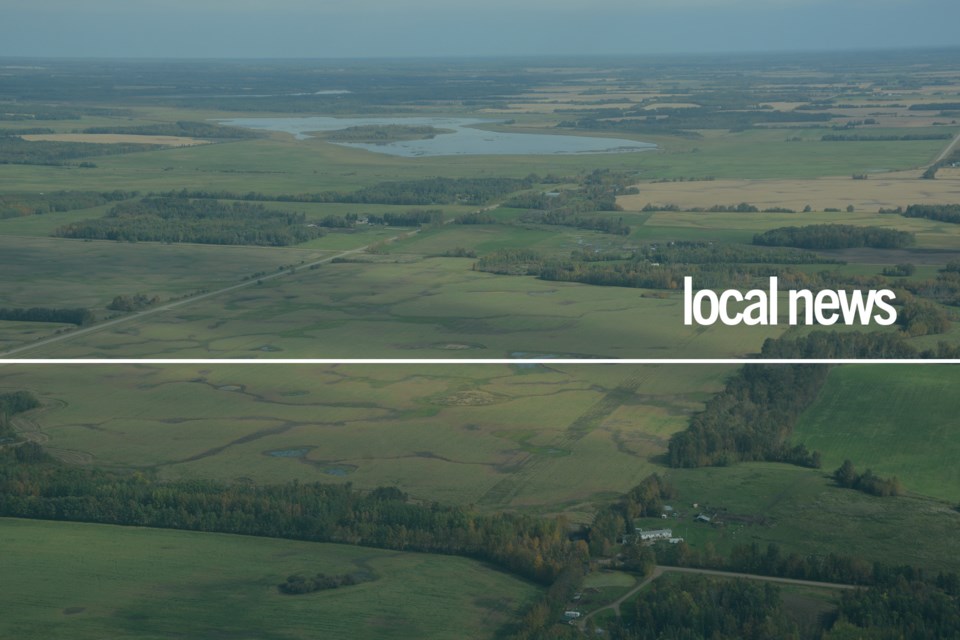Despite recent rains, Sturgeon County farmers are looking at a subpar harvest this year because of last month’s scorching heat.
Heavy rains soaked much of St. Albert and Sturgeon County last week after nearly a month of hot and dry conditions.
Ron Krywko, who grows grain near Morinville, said last week’s rain came too late to save many early crops such as barley, which have lost a lot of their potential yield.
“If we would have had rain 10 days ago, 15 days ago, everything would have been off to the rodeo,” he said.
It’s rain that was long overdue, and farmers will need plenty more of it to turn this year’s crops around, said Craig Solberg, sales manager at Sturgeon Valley Fertilizers.
“Farmers that have been here for 50 years have said it’s the driest they’ve ever seen it,” Solberg said.
Solberg said some farmers report their grain crops have already started “heading out,” with yields in some areas dropping four per cent a day for six days as a result. (Grain crops “head out” when they switch from growing bigger to growing seeds. The earlier a plant heads out, the less seed it can produce.)
“I’ve been in agriculture for 40 years, and this is the earliest I’ve ever seen cereals heading out,” Solberg said.
Mediocre harvest?
Solberg and Krywko’s observations line up with those of farmers throughout the North West region (which includes St. Albert and Sturgeon County), the June 13 Alberta Crop Report shows.
That report found most crops are stressed and maturing early due to the heat and dryness, despite recent rains. Crops in the North West region are in the worst shape of any in Alberta, with just 18 per cent ranked as good or excellent as of June 13 — a proportion far below the 10-year average of 69 per cent. Pastures are also struggling here, with 83 per cent considered to be in poor or fair condition.
Delton Jubinville, who raises cattle just north of St. Albert, said the recent heat, dryness, and forest fire smoke have all stunted pasture growth, meaning he has had to rotate his cattle between fields more often to protect the weaker grass.
“The pastures are definitely behind,” he said, and he’s had to haul more water for his cows to drink.
Tam Andersen of Prairie Gardens & Adventure Farm by Bon Accord said recent rains came just in time for her strawberry crops, which because of the heat would be ready to pick by the end of June — nearly two weeks ahead of schedule.
“I don’t think I’ve ever had strawberries this early before, and that’s since 1984,” she said.
Krywko said farmers should expect a below-average grain crop this year as a result, although canola could still make a recovery. The late rain could also cause uneven crop development, which would make the timing of harvest more difficult. While most of the damage has been done, Krywko said another month like May would make this year’s harvest even worse.
“June and July are very critical months to have moisture,” he said, and hopes for more rain to keep the crops growing.
Andersen said global heating will bring more of these hot and dry spells in the future, which could put stress on water resources as farmers rely more on irrigation. She predicts shelterbelts will become more popular as a result, as those tree banks store carbon and snow on fields.
Visit open.alberta.ca/dataset/2830245 for the latest Alberta Crop Report.




